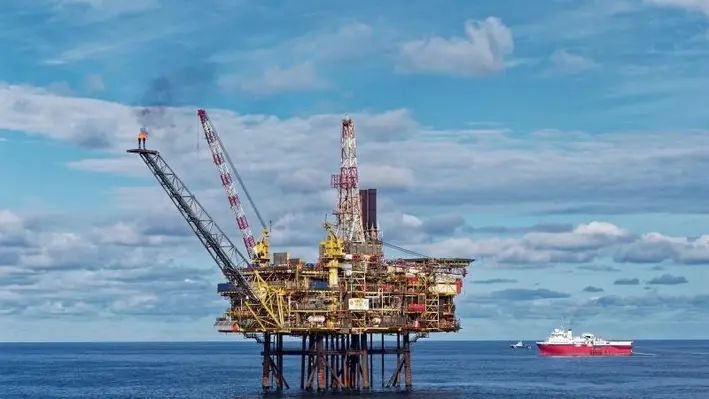

The Net Zero Technology Centre has recently announced the launch of its 2022 Open Innovation Programme aimed at developing and deploying technologies to reduce offshore emissions, accelerate clean energy production, and enable the delivery of the UK’s net-zero ambitions.
The 2022 programme will feature two funding competitions, the first of which is opening in March, 2022 and the second scheduled for October later this year.
Businesses from across the globe can apply for a share of US$9.2mn available in the first competition, with a maximum of US$1.3mn to be awarded to each successful project.
The projects, in order to secure the funding, must support the transition towards net-zero with an obligation of trialling and deploying technology within the UK continental shelf. As well as funding, the projects will also gain access to data, facilities, and technical expertise from the industry. Seven technology focus areas have been identified for the first competition:
Carbon capture, utilisation and storage (CCUS)
Hydrogen and clean fuels
Renewables and energy storage
Zero emissions power
Venting and flaring
Integrity management
Late-life and decommissioning
Digital and data architecture, smart assets and field automation will be included in the technology focus areas within the second US$3.9 funding competition due for launch in October 2022.
Myrtle Dawes, Solution Centre Director, Net Zero Technology Centre commented, “Following COP26, it is clear that we need to urgently focus on accelerating the delivery of technologies that will secure our net-zero ambitions. Our updated funding model will allow us to concentrate on specific technology gaps to develop and commercialise the innovative technologies that are currently in the prototype and demonstration phase and ultimately drive the huge leaps in clean energy innovation that will deliver our 2050 emission reduction targets.”
Scottish Government Economy Secretary Kate Forbes on the competition, “Accelerating efforts to reach net-zero is a priority for this Scottish Government, which is providing US$118mn funding to the Net Zero Technology Centre through the Aberdeen City Region Deal.”
“This funding competition will help the energy sector develop and deploy the innovative technologies required to achieve a just transition for Scotland,” she added.
UK Government Minister for Scotland Iain Stewart said, "The UK Government is investing US$118mn in the centre as part of our broader package of support for the North Sea transition, with a goal of helping the region's energy industry cut emissions by 50% by 2030. This will help bring prosperity and jobs to communities across the region by attracting investment in new facilities, skills and technologies."
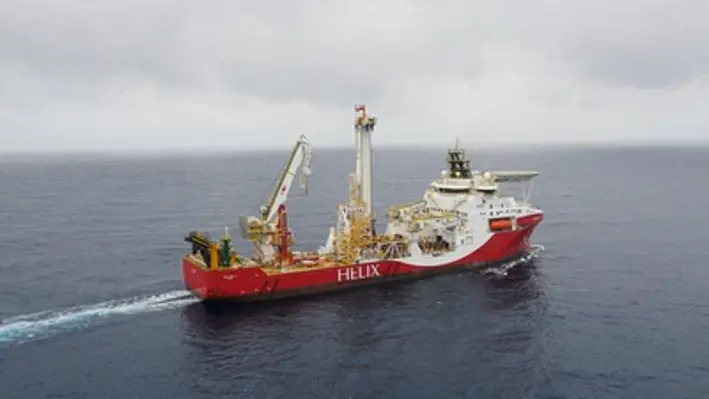

Siem Offshore and Helix Energy Solutions Group Inc, have entered into an agreement for the well intervention Vessels Siem Helix 1 and Siem Helix 2 which replace the existing contracts.
The new firm period will be three years for Siem Helix 1 and 5 years for Siem Helix 2 with subsequent options for both vessels. Commencement will be in direct continuation of present contracts within the first quarter of 2022.
The two vessels are said to be purpose designed, advanced well intervention vessels capable of completing a wide range of subsea projects such as well intervention, decommissioning, top hole drilling, subsea installation work, offshore crane and ROV operations, offshore construction work and emergency response capabilities. Both vessels have a length of 158 metres, a beam of 31 metres and an accommodation capacity for 150 people. They can operate in up to 3,000 metres of water with transit speed in excess of 15 kn.
This extension has reconfirmed Siem Offshore’s important role within the well intervention segment, and the company stated that it is very pleased to see a key client such as Helix Energy Solutions extend their professional relationship.
Total contract backlog for SIOFF is now valued at US$440mn.
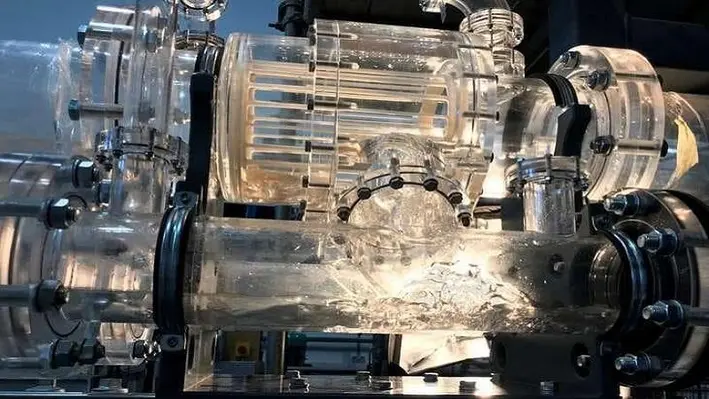

The Scottish Enterprise, Scotland's national economic development agency, has given UK£765,000 to Worley, a global provider of project and asset services in the energy, chemical and resources sectors, for full pre-production testing of its pseudo dry gas (PDG) liquid removal system.
Worley’s Enhanced Subsea Gas Tieback Project reduces operational CO2 emissions in gas fields by more than 90%, while increasing technical and commercial viability.
The technology removes the need for topsides and costly compression by reducing back pressure in the pipeline and the shape of the resistance curve. This reduces the associated high carbon emissions and allows for greater tie-back distances.
Andy McDonald, Head of Low Carbon Transition at Scottish Enterprise, commented, “As the energy industry strives towards sustainability, it’s important to support solutions that enable decarbonisation. The pseudo dry gas technology developed by the Worley team in Aberdeen and supported by Scottish Enterprise will contribute to lower carbon emissions across industrial processes.”
Worley’s pre-production testing will build upon the first prototype which was created and tested in 2020. The scope includes the fabrication of a large-scale unit, a magnetic drive subsea pump, and a supporting subsea control system. These are being tested as a system under pressures of more than 130 bar over the expected operational envelope, with a variety of hydrocarbon fluids.
Ahead of this project, Worley conducted several techno-economic concept field studies for various operators. These studies demonstrated the system’s improved recovery levels compared to competing technology, due to efficiency gains within a tie-back. The studies also showed that upstream CO2 emissions are reduced by the elimination of compression-based systems.
“Driving lower carbon technologies to help our customers is aligned with our purpose of delivering a more sustainable world,” said Andrew Berryman, Group President of Technology Solutions at Worley, “It’s significant that PDG has been identified by industry and government bodies as an enabler for emissions reduction and look forward to expanding its use in industry.”

 EnQuest, a production and development company, with operations in the UK North Sea and Malaysia, has provided an update on its operational performance, decommissioning business and for the year 2021.
EnQuest, a production and development company, with operations in the UK North Sea and Malaysia, has provided an update on its operational performance, decommissioning business and for the year 2021.
The company also reported that its debt reduction continues with strong cash flow and improved macro conditions.
EnQuest chief executive, Amjad Bseisu, commented, “Our decommissioning business performed better than expected, while our emissions were 45.7% below the North Sea Transition Deal 2018 baseline, and close to the 2030 target of 50%. I am very pleased we are industry-leading in emission reductions and am excited about our new energy initiatives around Sullom Voe.
“The supportive macro environment and higher oil prices allow us to look forward to organic growth to offset natural declines. We remain focused on continuing to reduce our net debt while selectively investing in our low-cost, quick payback well portfolio. At the same time, we will continue to be disciplined with respect to M&A opportunities.
“EnQuest’s business is strongly positioned to play an important role in the energy transition. We will do so by responsibly optimising production, leveraging existing infrastructure, delivering strong decommissioning performance and exploring new energy and further decarbonisation opportunities.”
The company also reported that during the year, a production enhancement programme, including a coil tubing intervention campaign was undertaken, restoring four wells to production. Repairs to a compressor gearbox failure which resulted in single train operations during much of the fourth quarter of 2021 were completed and both trains are now in operation.
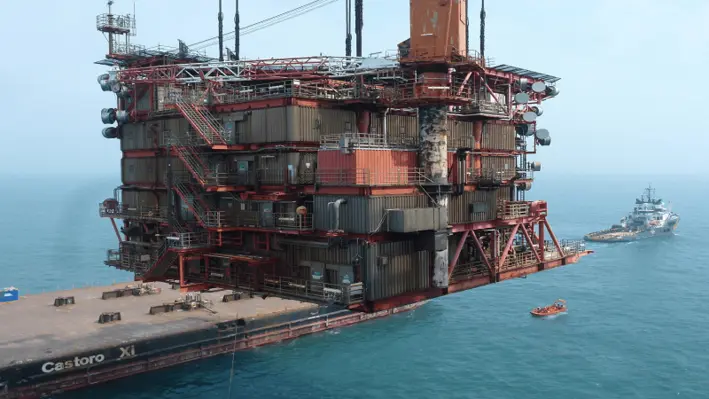

Global Maritime has recently completed the Marine Warranty Scope (MWS) for decommissioning the LOGGS Complex in southern North Sea.
The five platforms, linked by bridge, were removed with Saipem vessel S7000 and were supported by the North Sea Giant.
All of the jackets, topsides and bridges have been transported to Able UK, Hartlepool, where they will be dismantled and recycled.
Robert Askins, London Operations Managers, commented, “Global Maritime are delighted to achieve this significant milestone. Working collaboratively with the client to complete this complex decommissioning campaign safely and efficiently is a testament to our strong working relationship.”
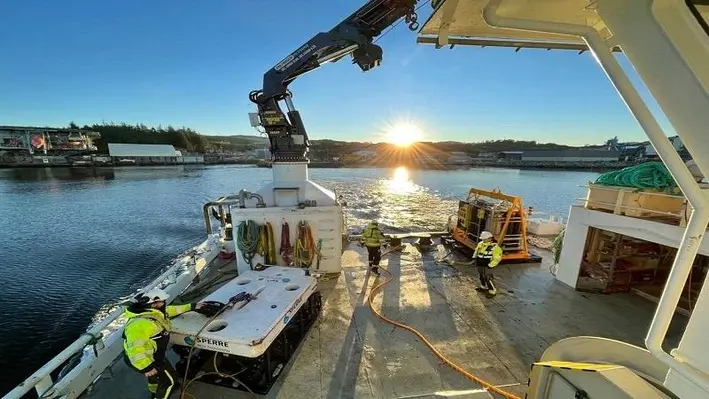

Innova AS and Teledyne Energy System Inc. have demonstrated how hydrogen can be used for local power of subsea control systems.
Teledyne’s Subsea Fuel Cell Supercharger is a hydrogen and oxygen fuel cell electric power source designed to operate on the ocean floor with no connection to the surface. It is inherently load following and provides power on demand. The subsea hydraulic power unit (sHPU) developed by Innova provides control fluids, grease and chemicals for different subsea application at a pressure up to 690 bar.
The demonstration included a well intervention simulation in which the Subsea Supercharger powered the Innova sHPU. The two systems were integrated and effectively deployed to a depth of 235 metres (770 feet) where a low viscosity fluid was pumped to a pressure of 180 bar (2,600 psi) for 30 minutes, six times a day.
The Subsea Supercharger transitioned from ‘Sleep-mode’ to ‘On’ in response to power demands from the sHPU as it repeatedly cycled on and off.
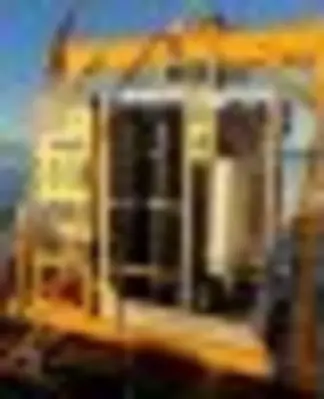
The system was designed to provide the offshore oil and gas community with an environmentally responsible backup power alternative for failing umbilical power sources as well as untethered power for green field development or brown field sustainment. It is also capable of powering resident ROVs, providing energy for autonomous underwater vehicle (AUV) charging docks, back-up power for subsea control systems, and supports transition to green hydrogen from fossil fueled surface-based systems.
The demonstration took place at the Norwegian Center for Offshore Education, Tau Autonomy Center in Tau, Norway. The next validation test will occur in the spring of 2022 and will incorporate the Subsea Supercharger with an AUV charging dock to demonstrate untethered, long-duration AUV operations.
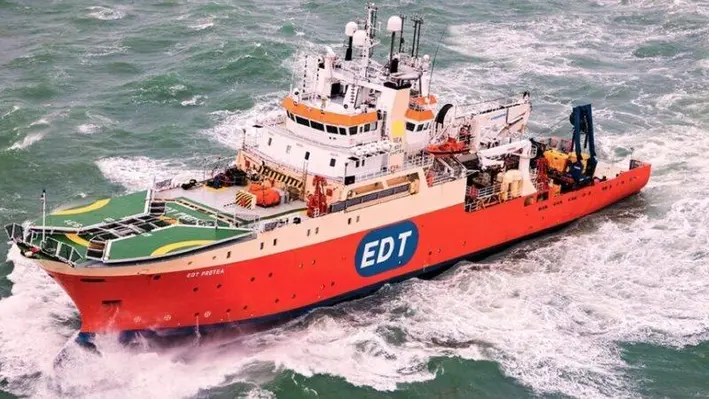
 N-Sea Group has signed a long-term vessel agreement with EDT Offshore for the EDT Protea, which has a strong track record in Subsea services in both AIR diving and ROV intervention works.
N-Sea Group has signed a long-term vessel agreement with EDT Offshore for the EDT Protea, which has a strong track record in Subsea services in both AIR diving and ROV intervention works.
With its sleek design and DP3 capability, the advanced DP-3 Multi-Purpose Offshore Support Vessel is ideal for working in close proximity to assets. This, along with a 50t AHC crane, forms the perfect platform for total subsea solutions. The vessel holds a solid track record for continuous diving operations in the North Sea for many years.
N-Sea has taken significant steps of planned growth; creating a sound and healthy environment that warrants investments, establishes strong strategic partnerships, and sets the stage for long-term client relationships.
As well as the previously announced agreement with Geo Plus for the Geo Focus, the EDT Protea is one of the six vessels that N-Sea will have under full management and control. By having long term control over vessels, it allows N-Sea to provide safer, and more efficient, operations working with fully committed and integrated teams on board. Through the N-Sea dedicated vessel initiative N-Sea offers its clients a unique set of subsea solution capabilities fully supported by N-Sea’s own experts.
“I would like to congratulate and thank EDT Offshore on this unique opportunity, as it reconfirms N-Sea’s position as one of the most diverse companies in the subsea solution industry. We are creating a community of entrepreneurship, knowledge, experience, and innovation. The EDT Protea is an important tool in achieving this goal,” said N-Sea Group CEO Arno van Poppel.
"Together with our qualified and engaged staff we look forward to creating new and exciting opportunities further exploring existing and engaging in new long-term relationships with our valued clients, delivering the best optimised subsea solutions for them."
The parties will start their joint operations under the agreement in March 2022.
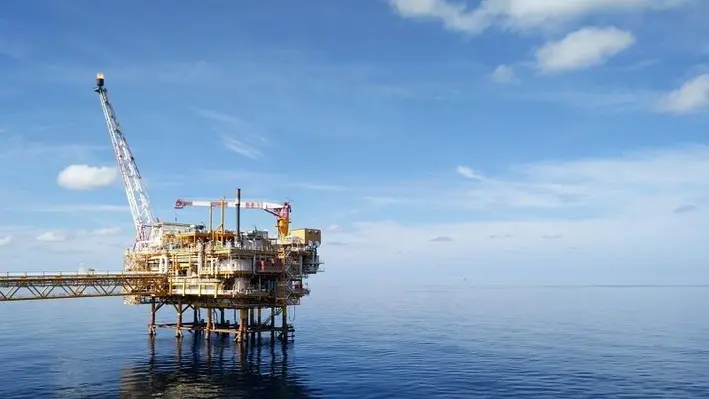

Serica Energy, a British independent oil and gas exploration and production company with a portfolio of exploration, development and production assets, has indicated its intention to pursue a well intervention campaign in the years to come.
In its recently published Corporate Update presentation for the year ended 31 December 2021, the company made the announcement alongside its intention to continue with its programme of through-cycle investment in its diversified portfolio of assets; drilling for the North Eigg exploration well in the summer of 2022; and its plans to grow cash balances to offer increasing options for futher investment, acquisition and distributions.
In the statement, the company wrote, “Plans are also in place for a well intervention campaign to take place in 2022 to improve the production potential of several Bruce and Keith wells during subsequent years.”
Bruce and Keith are two assets off the coast of the Orkney Islands. Together with Rhum, they provide a significant contribution to the UK gas demands and are estimated to contain net 2P reserves of 50.9 mmboe as of 01.01.21, of which more than 80% is gas.
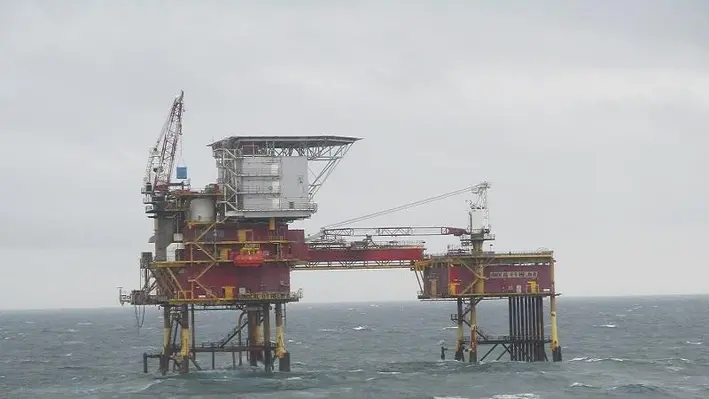

Petrogas E&P Netherlands B.V. (a part of Petrogas E&P LLC) has awarded Heerema an integrated engineering, preparation, removal, and disposal (EPRD) decommissioning contract for multiple North Sea oil platforms.
The work involves removing the Haven, Hoorn, Helm, and Helder platforms from Block Q1 of the Dutch sector in the southern North Sea.
Nick Dancer, Petrogas E&P Netherlands’ General Manager, remarked, “We are proud to have reached the 40th year of production with these assets, but the time has come to remove the platforms. This contract demonstrates Petrogas’ commitment to the safe and timely removal of our facilities and we are very pleased to have signed this contract with Heerema, whom we believe is the ideal partner for this project with their commitment to sustainability and circularity.”
The platforms have been important contributors to the Dutch oil and gas industry over the last 40 years, with the Helm platform being the first to produce oil on the Dutch continental shelf for the Dutch market. Their removal, which will take place over several years, is the final stage in a key part of the Netherlands' energy history.
Koos-Jan van Brouwershaven, Heerema's CEO, commented, “Heerema is proud to be Petrogas E&P Netherlands' chosen contractor for this significant decommissioning project. Our team is looking forward to working closely with Petrogas to prepare and execute the safe and sustainable decommissioning of these platforms. Heerema has installed the majority of North Sea platforms, and we believe in the circularity of removing these structures, leaving the sea as we found it. This action aligns with our own sustainable and circular ambitions to reuse and recycle wherever possible.”
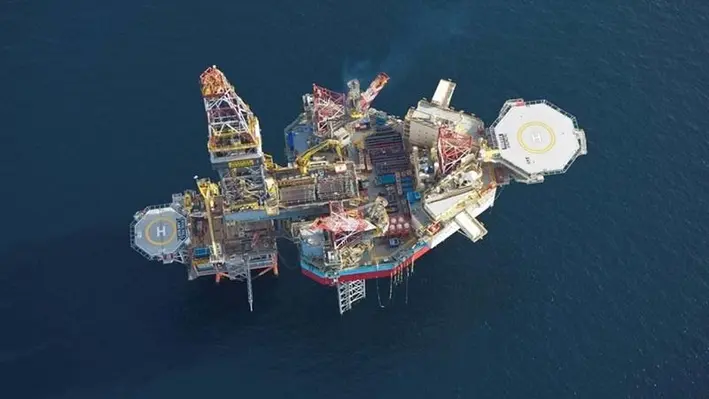

TotalEnergies E&P Danmark has awarded Maersk Drilling a contract for well intervention services in the Danish North Sea.
Maersk will employ the high-efficiency jack-up rig Maersk Reacher to carry out the 21-month contract which is expected to commence in July 2022. The contract includes options to extend the duration by up to 27 additional months.
Maersk Reacher is a 350 ft, Gusto-engineered MSC CJ50 high-efficiency jack-up rig which was delivered in 2009. It is currently operating offshore Norway where it is scheduled to be replaced in a rig swap with Maersk Integrator end-February/early March 2022. Maersk Reacher will undergo a special periodic survey prior to commencing the contract with TotalEnergies.
Claus Bachmann, Head of North Sea Division in Maersk Drilling, commented, “We’re happy to build further on our long-standing collaboration with TotalEnergies by adding this long-term contract which means that two of our rigs will be working for TotalEnergies in Danish waters this year. Maersk Reacher will be available for the job after being released from its current work scope in Norway through the planned rig swap with Maersk Integrator.”
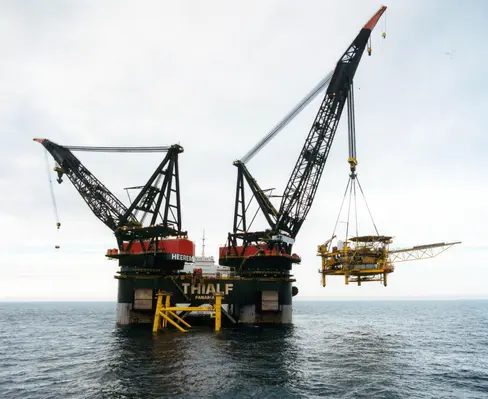

DNO has awarded a decommissioning contract to Heerema Marine Contractors for the integrated engineering, preparation, removal, and disposal (EPRD) of the Ketch and Schooner platforms.
The Ketch and Schooner platforms are located in the southern North Sea in the UK sector and were installed by Heerema in the 1990s. Both platforms are tied-back to the Murdoch complex, which will also be removed by Heerema Marine Contractors.
The Ketch platform is located in a water depth of 54 metres, and the Schooner platform is located at 71 metres of water depth. After removal, both structures will be responsibly disposed of and will be reused or recycled up to 97%.
Michel Hendriks, Heerema’s Decommissioning Director, commented, “Heerema is proud to be the contractor of choice for the decommissioning of the Ketch and Schooner platforms. The EPRD award is the result of our ambition to remove offshore structures of all sizes in a safe and sustainable manner.
“We are especially pleased to contribute to the circularity of the project by being the installation and removal contractor, which is in line with our own sustainable circular ambitions.”


The Petroleum Safety Authority Norway (PSA) has published the results of an audit of Equinor regarding the permanent plugging of wells on the Veslefrikk field.
The results have been published following the audit conducted on 30 September 2021 which was carried out in order to monitor that Equinor’s system for preparing, planning and executing the permanent plugging of wells on the Veslefrikk field complied with the regulatory requirements
In the audit, PSA examined how Equinor plans and follows up the verification well barriers the verification of well barriers; the use of new technology/methods/new materials; the assessment of risk and associated uncertainty; changes in operational sequencing; and the implementation of lessons learned from completed operations.
PSA concluded that no non-conformities and improvement points were identified allowing Equinor to move ahead.
Page 26 of 35
Copyright © 2025 Offshore Network